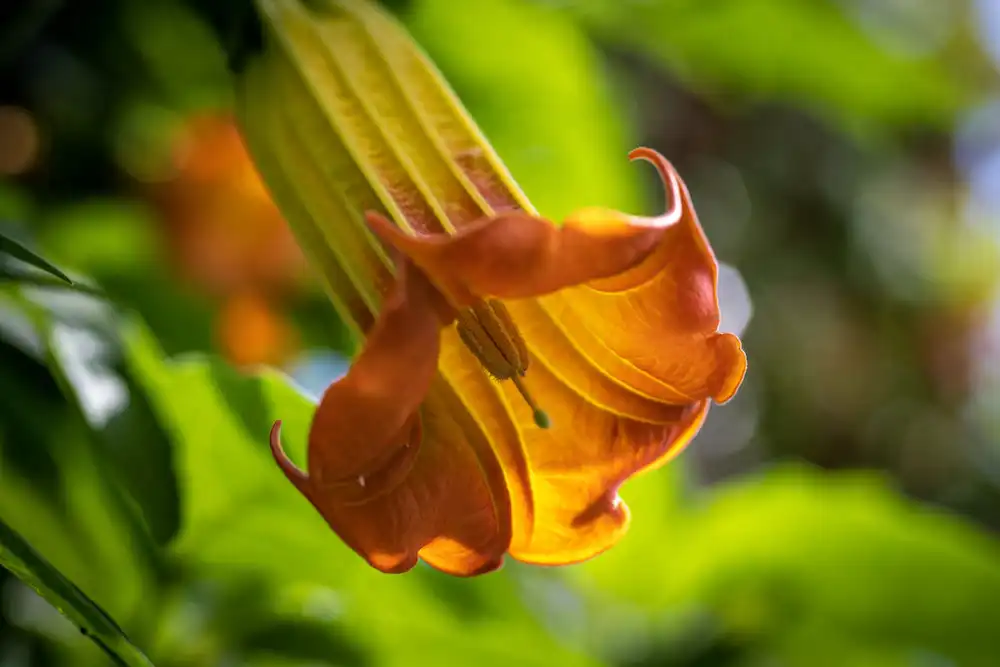In a new study, published in the journal New Phytologist, a team of scientists from the Royal Botanic Gardens, Kew have, for the first time, predicted the extinction risk of all 328,565 known species of flowering plants.
This new research means that everyone—from an individual choosing their first houseplant, to a professional biodiversity researcher—can look up any species online and immediately see whether it is probable that it is threatened with extinction in the wild, and what level of confidence scientists have in that prediction.
The scientists used a Bayesian Additive Regression Trees (BART) model trained on a dataset of more than 53,000 plants already assessed on the International Union for Conservation of Nature (IUCN) Red List, to determine the likely status of the remaining 275,004 unassessed species.
An earlier version of this research, from Kew and partners in October 2023, showed that 45% of all flowering plants are threatened with extinction. The publication enables access to the data on which this headline was based, the full set of predictions for individual species. The researchers’ ambition is that these predictions have immediate scientific value in making plant conservation more accessible and engaging to a wider audience so that biodiversity can be urgently protected.
Dr. Steven Bachman, Research Leader in RBG Kew’s Conservation Assessment and Analysis team and author of the study, says, “We hope that these predictions can be used for people to apply to their own local biodiversity to find out if they’ve got a threatened species in their house, garden or local park that needs protecting.
“At a larger scale, our findings can be used by scientists to prioritize and accelerate extinction assessments for the plants we’ve identified as probably threatened but haven’t been officially assessed by the International Union for Conservation of Nature (IUCN) Red List yet. We hope that a commitment can be made to assess these species or we can encourage other people to carry out these assessments.”
Plants play a vital role in supporting healthy and resilient ecosystems. Plants can provide natural solutions as our climate changes and underpin our efforts to restore already degraded ecosystems. To achieve the global targets set out through the Convention on Biological Diversity, we need to understand the what, where and current status of plants.
As Bachman says, “We currently lack formal assessments for most plant species and every quiet loss of a species jeopardizes our ability to respond to future challenges. Our comprehensive coverage of assessments for all flowering plants raises awareness of each individual species, but especially of those species that we predict to be threatened.”
Kew’s Conservation Assessment and Analysis team is at the forefront of plant extinction risk assessment and research—both contributing thousands of formal extinction risk assessments to the global IUCN Red List and carrying out research on the “unknowns” of plant extinction risk such as what species are likely to be at risk, and where are they concentrated.
To model extinction risk for all the species, scientists used data from the World Checklist of Vascular Plants, the IUCN Red List and datasets on the impacts of human activities which are all regularly updated. However, the predictions for each species are a moving target as some species’ status can improve while others sadly can massively deteriorate. Therefore, it is crucial that the scientists regularly update this baseline assessment with new versions to ensure they are providing accurate and useful predictions.
The assessments carried out by the researchers are freely available for anyone to search via Kew’s Plants of the World Online portal. When entering the scientific name of a flowering plant species into the search box you can find under the “General Information” tab whether it is predicted to be threatened (i.e. categorized as Vulnerable, Endangered or Critically Endangered if assessed for the IUCN Red List) or not-threatened (i.e. likely to be assigned to the official IUCN Red List categories Least Concern or Near Threatened).
Dr. Eimear Nic Lughadha, Senior Research Leader in Conservation Assessment and Analysis at RBG Kew and author of the study, says, “Being assessed, particularly as Endangered or Critically Endangered, literally changes the fate of a plant, as once its extinction risk is known, it can be prioritized for conservation. In the absence of IUCN Red List assessments for all plant species, our predictions will provide a really useful indication as to which species we consider most likely to be threatened with extinction and, for the first time, our level of confidence in each species’ prediction.”
Read the paper: New Phytologist
Article source: Royal Botanic Gardens, Kew
Image: The Brugmansia sanguinea is officially assessed as Extinct in the Wild on the IUCN Red List. Here it is pictured in the Temperate House at the Royal Botanic Gardens, Kew in London, UK. Credit: RBG Kew






